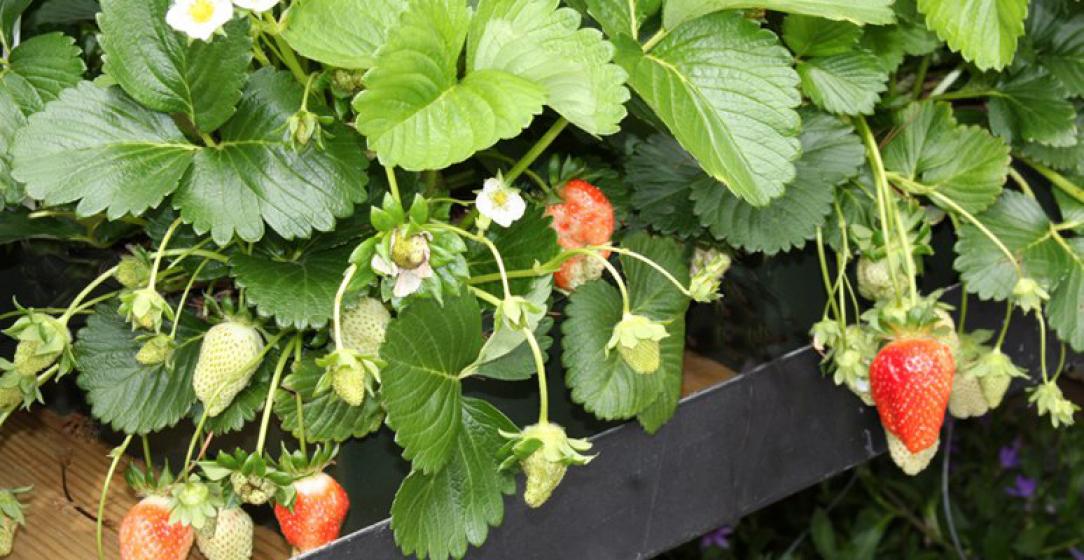Strawberries are a super fun fruit to grow at home and homegrown berries taste FAR better than the store-bought ones. With favorable conditions, each strawberry plant should produce one quart of strawberries. They are relatively easy to grow, require minimum space, and virtually no chemicals are needed. Berries not eaten fresh can be frozen or preserved. Besides being an excellent dessert fruit, strawberries are a good source of vitamin C as well as being low in calories (1/2 cup fills an adult's daily need for vitamin C and equals about 25 calories).
There are two types of strawberries available:
- June Bearing strawberries produce a single, large crop per year during a 2 - 3 week period in the spring. June bearers are traditionally produce a single flush of flowers and many runners. They are classified into early, mid-season and late varieties. The largest fruits are generally from June bearing varieties.
- Everbearing strawberries produce two to three harvests of fruit intermittently during the spring, summer and fall. Everbearing plants do not send out many runners and can be grown in containers.
Strawberry Ozark Beauty - Like all strawberries, Ozark Beauty strawberry plants prefer full sun. These strawberry plants are vigorous and everbearing. Ozark Beauty strawberry plants produce large, well-colored, tasty strawberries – and lots of them.
Strawberry Chandler - Full sun is greatly beneficial to Chandler strawberry plants. The vigorous, high-yielding, June-bearing Chandler strawberry plants produce very desirable berries. Chandler strawberries are very large, firm, and vary from being long and wedge-shaped to large and conical. They are a brilliant red color, glossy, and have an exceptional flavor profile. Chandler strawberries are good for eating fresh and very good for freezing.
Strawberry Quinault is a newer everbearing variety that produces berries juicy fresh strawberries. Makes an excellent ground cover or border planting along walks or paths. Fruit is tasty and can be ready to eat in 4 to 5 weeks after planting. Use them in jams, preserves, tarts and pies.

